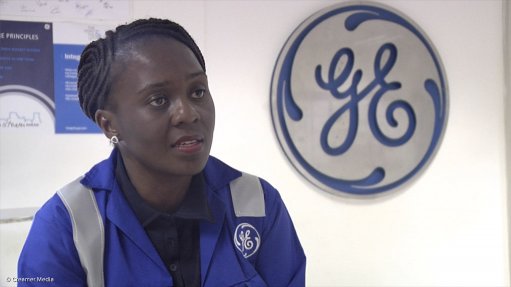
There is now more pressure on local industries than ever before to reduce local emissions to meet stringent environmental standards.
Multinational conglomerate General Electric (GE) Steam Power executive project director Nthabiseng Kubheka says this makes it even more essential that coal-fired power plants provide maximum efficiency and rely on leading air-quality control technologies to remove air pollutants – such as particulate matter, nitrogen oxide and sulphur dioxide – to minimise environment impact.
Kubheka oversees GE’s scope of work at State-owned power utility Eskom’s Kusile power station in Emalahleni, in Mpumalanga. When complete, Kusile will consist of six turnkey units delivering 800 MW each for a total of 4 800 MW. This is enough power to meet the electricity needs of 3.5-million households in South Africa.
“For the Kusile project, GE is responsible for the engineering, procurement and construction of turbine islands, air-cooledcondensers and a wet flue gas desulphurisation (WFGD) plant. Within our scope, we are also responsible for the sizing of and quality assurance, as well as the control and supply of equipment.”
WFGD ensures the removal of sulphur dioxide and particulate matter emissions from the coal process to ensure better air quality for the surrounding areas of a thermal plant.
As a result of WFGD, emissions at Kusile are kept below the limits stipulated by South Africa’s environmental regulations. It is one of the most advanced environmental control technology systems and the first of its kind to be launched in Africa, says Kubheka.
The WFGD exists as its own plant within the Kusile power plant and is not a single piece of equipment. The Kusile WFGD is designed to accommodate all six units, each fitted with its own absorbers, shared ball mills and dewatering trains. For example, one ball mill can drive three units, she explains.
“During the first performance test last year, we exceeded performance expectations by achieving a 93% removal efficiency rate for sulphur dioxide. Upon completion, Kusile will be the first coal-fired power plant in Africa to be fully equipped with the WFGD technology. These results demonstrate that the station not only meets but also exceeds minimum emissions standards, thereby improving air quality for the surrounding areas.”
Further, through this project, GE has managed to equip a new team of skilled personnel in Africa with expertise in WFGD technology and, as Kubheka points out, “this is a big part of the company’s empowerment journey and ensuring that the technology and knowledge is distributed throughout Africa”.
Meanwhile, GE continuously improves its solutions to ensure that coal and industrial plants are running at their optimal performance while lowering their environmental impact – from improved efficiency to reduce carbon dioxide emissions and plasma burners for higher flexibility to all types of air quality control systems to capture local pollutants.
The company is ready to support clients locally and, on the continent, to reduce their power plant emissions.
“We have developed a series of emission reduction systems that tackle all local pollutants, such as sulphur dioxide, nitrogen oxide, particulate matter and mercury, to improve the air quality of the overall coal installed base,” she enthuses.
Moreover, South Africa – like most coal-powered nations – is moving towards adopting new water-conserving technologies, such as air-cooled condensers, which address water constraints. Subsequently, GE has moved from managing wet- to dry-cooled coal plants, resulting in significantly less water consumption.
“We remain committed to water conservation at Kusile, using a reservoir instead of fresh water in an efficient way. All the water supplied to the WFGD is reclaimed through the dewatering process and reused to make limestone slurry in the ball mills and for dilution in the absorber, as well as for the flushing of pipes,” Kubheka concludes.